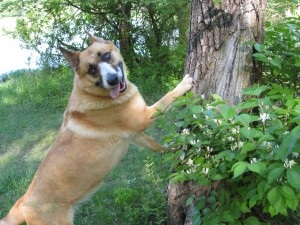Phase 1: The teaching and control phase –
During phase one, the goal is to teach the desired behaviors you want through shaping, luring and engagement. It’s also the time to teach the dog to pay attention and perform these commands around distractions. This phase lasts between 1-3 weeks on average, however in certain situations it may take longer to gain the reliability needed before moving on to phase two. Once your dog is capable of performing commands quickly and reliably around a variety of distractions with minimal problem solving required, then your dog and you are ready to move on to phase number two. During the initial conditioning process, reward your dog every time using food, praise or toy!
Phase 2: The reinforcement phase –
During phase number two, we begin to reduce our dependence on the dog training collar and introduce consistency via variable or intermittent reinforcement. This phase will last between 2-6 weeks on average. Some situations will require you to stick with this phase for longer than average. Do Not Rush This Phase! Take your time and enjoy the process. It’s also not uncommon as dogs mature and age to have to revert back into phase one training again for several days depending on how your dog’s performance and behavior is. When your dog is capable of performing commands without the need for reinforcement for approximately 6 weeks, then your dog is very likely to be reliable without their training aid present. We are ultimately looking to have your dog learn how to filter out distractions entirely. When this is achieved, your dog is much less likely to act out in an unwanted manner because of distractions.
Phase 3: The maintenance phase –
The third and final phase of training a dog is the maintenance phase, and is ongoing for the life of the dog. During this phase, you will likely be using your training collar or other dog training aid very little as your dog is capable of ignoring distraction. The catch however is that they are still capable of distraction, they are not robots! A smart trainer recognizes this and is ready to maintain their rules, commands and boundaries at anytime. It is not uncommon to have a dog who senses the lack of maintenance and begins to revert back in their behavior. The benefit of having done your dog training properly to begin with is that regression is easily minimized and dealt with by simply jumping back into training for a short time to remind the dog of the expectations.
